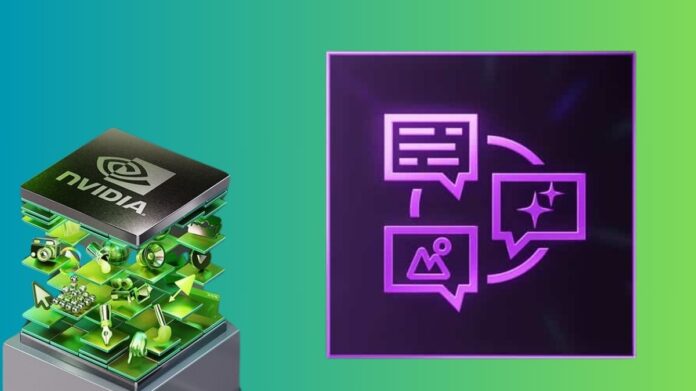NVIDIA DGX Cloud
Windows apps and games now have new powers thanks to generative AI. It powers spontaneous, animated NPCs, lets artists produce original artwork, and lets players increase frame rates by up to four times. However, this is only the start.
The need for compute to support generative AI is growing along with its capabilities and use cases.
To effectively and efficiently fulfil the needs of AI workloads, hybrid AI blends scalable, cloud-based GPUs with the onboard AI acceleration of NVIDIA RTX.
Hybrid AI
The increasing use of AI has app developers searching for ways to launch their products: High performance and low latency are provided by AI running locally on RTX GPUs, which is always accessible even when the internet is unavailable. On the other hand, cloud-based AI can support numerous customers at once by scaling across numerous GPUs and operating larger models. A single application will frequently make use of both.
A sort of matchmaker, hybrid AI balances NVIDIA DGX Cloud scalability with local PC and workstation compute. It offers the freedom to tailor AI workloads according to particular use cases, expenses, and output. It aids developers in making sure AI jobs execute where it makes the most sense for the particular applications they are working on.
NVIDIA GPUs and NVIDIA’s AI stack, which includes TensorRT and TensorRT-LLM, accelerate AI whether it is operating locally or in the NVIDIA DGX Cloud. This implies spending less time staring at death-staring pinwheels and more time delivering cutting-edge, AI-powered functionality to users.
Developers, gamers, and artists can use hybrid AI processes using a variety of NVIDIA tools and technologies.
Imagine in the Cloud, Realise on RTX
It has been shown that generative AI may assist artists in ideation, prototyping, and brainstorming new works. A cloud-based generative photography service designed for and in collaboration with artists, Generative AI by iStock powered by NVIDIA Edify is one such solution. It offers compensation to artist contributors and solely uses licenced content for training.
Beyond only creating images, iStock’s generative AI gives artists a wide range of tools to experiment with styles and variants, edit specific areas of an image, and enlarge the canvas. Artists may easily bring ideas to life even after multiple ideation sessions with all these tools at their disposal.
Artists can return their finished creative concept to their local systems. Whether it’s creating an incredible piece of artwork in Photoshop with local AI tools, animating the image with a parallax effect in DaVinci Resolve, or building a 3D scene with the reference image in Blender with ray tracing acceleration, and AI denoising in Optix, RTX-powered PCs and workstations offer artists AI acceleration in more than 125 of the top creative apps to realise the full vision.
Hybrid ACE Involves Life Into NPCs
Moreover, hybrid AI is opening up a whole new world of interactive PC gaming with NVIDIA ACE, which enables digital creators and game developers to incorporate cutting-edge generative AI models into digital avatars on RTX AI PCs.
With NVIDIA ACE, developers and designers may construct non-playable characters (NPCs) that can comprehend and react to text and speech from human players thanks to artificial intelligence neural networks. It uses artificial intelligence (AI) models, such as speech-to-text algorithms for handling spoken natural language, to produce responses from NPCs in real time.
A Tool for Hybrid Developers That Works Anywhere
Moreover, hybrid aids in the creation and optimisation of new AI models. On RTX GPUs, NVIDIA AI Workbench facilitates the rapid creation, testing, and customisation of pretrained generative AI models and LLMs by developers. Data scientists and developers can simply duplicate, collaborate on, and move projects with its simplified user interface and faster access to popular repositories like Hugging Face, GitHub, and NVIDIA NGC.
When more performance is required, projects can be quickly scaled up to a data centre, public cloud, or NVIDIA DGX Cloud. After that, they can be returned to local RTX systems on a PC or workstation for inference and minor customisation. Data scientists and developers can use pre-built Workbench projects to speed up data science workloads with smooth CPU-to-GPU transitions, fine-tune LLMs, use retrieval-augmented generation (RAG) to chat with documents, and more.
Developers can run and modify a configurable RAG application by using the Hybrid RAG Workbench project. Users have the option to conduct inference on a local RTX system, a NVIDIA DGX Cloud endpoint hosted on NVIDIA’s API catalogue, or NVIDIA NIM microservices by embedding their documents locally. The project allows developers to quantize models to operate on the GPU of their choosing and can be customised to use different models, endpoints, and containers.
On NVIDIA GeForce RTX PCs, RTX workstations, and in the NVIDIA DGX Cloud, NVIDIA GPUs power amazing AI solutions locally. With the development of hybrid AI workflows, developers, gamers, and creators may benefit from the best of both worlds.
This article is a part of the AI Decoded series, which shows off new gear, software, tools, and accelerations for GeForce RTX PC and RTX workstation users while demystifying AI by making the technology more approachable.


